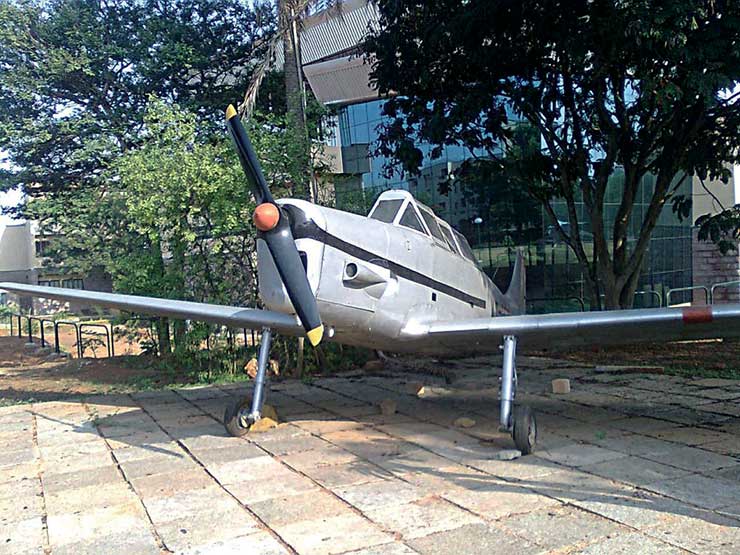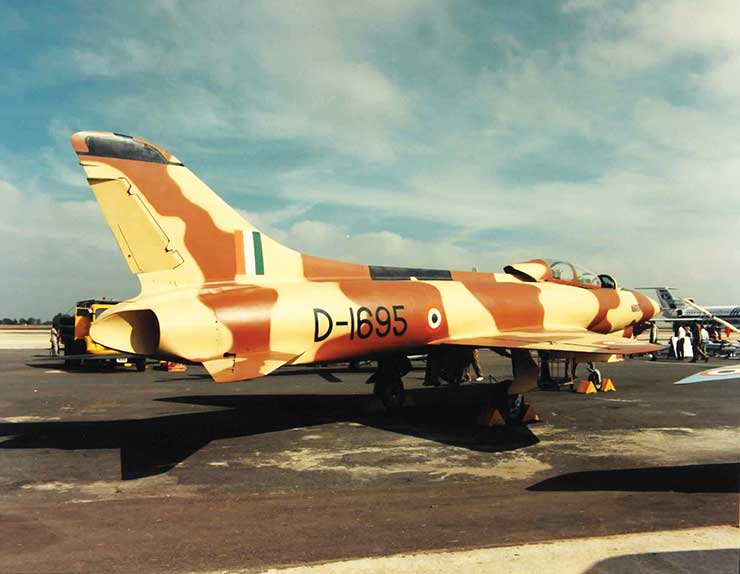
It is indeed very much the need of the hour for India to have a Beaverbrook considering that top officers of the Armed Forces and other security experts keep talking of a two-front war that this country may have to face in the years to come. In this context it is also a matter of concern that in India’s dismal political discourse, the dominant sentiment was one of satisfaction regarding the failures of Hindustan Aeronautics Limited (in the context of the Rahul Gandhi-Narendra Modi-Rafale feud) rather than of grief at the loss of two brave young test pilots of the Indian Air Force (Mirage accident in Bengaluru).
Obviously there is little realisation that today, a vast majority of the aircraft and helicopters operated by our armed forces, as well as their engines and ancillaries, are produced, overhauled and supported by different divisions of HAL.
The health, efficiency and growth of this aeronautics giant are not just vital for the combat efficiency of our military, but also for the future of our aerospace industry. Unless we make a success of HAL and its various projects, India will forever remain in the backwaters of aeronautics, and import-dependent.
Directionless HAL
Today, paucity of aircraft finds the IAF in dire straits too. Nor has any of India’s post-independence defence ministers shown the vision to provide a road-map and guidance for exploiting the huge potential of our aeronautics industry. Left in the hands of a lackadaisical Department of Defence Production and Supply, HAL has plodded along, growing in size but not in skills, technology or capability. A glimpse of HAL’s history is instructive.
India’s aviation industry can trace its roots to 1940, when Seth Walchand Hirachand established HAL in Bangalore. Soon after the outbreak of World War II, the government first bought a one-third stake in HAL, and then nationalised it. Handed over to the US Army Air Forces in 1943, HAL repaired and serviced hundreds of flying boats, fighters, bombers and transport aircraft for the Allied war effort in South-East Asia.
Soon after independence, HAL’s chief designer, Dr V.M. Ghatage, embarked on three aircraft projects, and over the next decade, HAL manufactured more than 400 Ghatage-designed aircraft: The HT-2 basic trainer, the Krishak observation aircraft, and the Pushpak. Ghatage’s last outstanding achievement was the design of the HJT-16 ‘Kiran’ jet trainer, of which 190 were built for the IAF and the Indian Navy.
HAL’s crowning glory came in June 1961 with the flight of the HF-24, Marut. The government of India, in a rare flash of inspiration, had acquired the services of German designer Dr Kurt Tank, to help HAL design a jet fighter. A sleek and elegant machine, the Marut had huge potential as a supersonic fighter, but since it was powered by two small turbo-jets, its performance remained sub-sonic and sub-par. Instead of persevering and seeking development options, in a stunning display of apathy and myopia, the Government allowed this project to lapse, with the IAF as well as the scientist community, remaining mute spectators.

Apart from the Marut and other indigenously-designed aircraft, HAL has, since the 1950s, produced an estimated 3,000 aircraft, including types like the Vampire, MiG-21, MiG-27, Jaguar, Sukhoi-30 and Hawk. The company has also built a few thousand aero-engines of British, French and Russian origin to power these aircraft. These statistics, however, refer only to ‘kit-assembly’ or ‘licenced production’.
Deep Lack of Confidence
The failure of HAL to acquire adequate aircraft or engine design and production skills became evident in a number of unsuccessful or abortive aircraft projects, coupled with a history of failures (often resulting in fatalities) in the IAF’s MiG-21 fleet and its other products. Remarkably, neither Defence Ministry nor any Indian aviation authority (related to Airworthiness, Quality Control or aviation regulation) has ever pinpointed faulty processes or lax personnel responsible or accountable for these mishaps. One is, therefore, not aware if any corrective actions have ever been implemented by the industry.
As HAL’s single largest customer and revenue generator, the Indian military is totally dependent on it for product support, but there continues to be a deep lack of confidence in this PSU, for four good reasons:
- The lethargic approach of HAL’s unionised employees, which engenders low productivity and deliveries delayed till March of the year.
- Poor production-engineering standards that create maintenance problems and prevent inter-changeability of parts within the fleet.
- Poor quality control, leading to component failures and accidents.
- Unresponsive product support that frequently leaves HAL customers in the lurch.
How to fix HAL?
The fact that in its 79th year of its existence, HAL is considered ‘unsuitable’ (by the GoI) to undertake production of Rafale point to the following serious lacunae that need to be addressed:
(a) Through benign neglect, the Government has failed to provide a ‘grand-strategic’ vision to India’s defence-industrial complex. A cursory glance at China’s ‘Guochanhua’ project could have provided many pointers for our government.
(b) Successive defence ministers, and ministers of state, have failed to devote adequate attention to efficient functioning of defence PSUs and their future growth. They have also utterly failed to ensure synergy between the military and the defence Science and Technology establishment.
(c) The Ministry of Defence bureaucracy has lacked the expertise and inclination to exercise required oversight and supervision over defence PSUs;
(d) There have been occasions when the persons chosen to head these vital undertakings have been unsuitable – lacking long-term vision, decision-making ability and innovative project-management skills.
Rather than continue its dependence on a pool of ‘generalist’ bureaucracy and the PSU cadres for selecting CEOs, the government of India should bring about a paradigm-shift and look for the best available talent in-country for such challenging assignments.
The expanded ‘gene pool’ to find suitably qualified persons in the driving-seat of strategic undertakings (like HAL) could encompass industry and business, but preference also needs to be given to demonstrated technical expertise, managerial skills and leadership-talent readily available in the armed forces.
–The author is a retired Navy Chief








